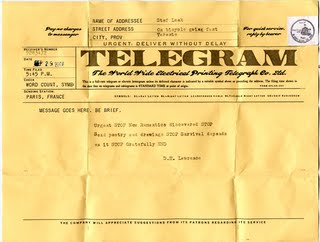
As people seeking for alternatives to Royal Mail, thousands have started to use telegrams again for their urgent messages.
For those who are not aware of telegram, it is one of the earliest forms of long distance communication and was first used in 1845. A telegram is message sent by an eletrical telegraph operator using Morse code, or a printing telegraph operator using plain text. The main benefit of using telegram is the ability to individually deliver a message door to door.
So far the majority of recent demand for telegrams has been from banks and employers desperate to ensure that important news reaches customers and staff in writing within a few hours.
The Queen, together with the heads of other European royal families, is a very regular user of telegrams.
Rob van Hoof, a spokesman of Telegramsonline which has The Queen as a customer said: “She is one of our good customers. These strikes are very important to us. They are always of benefit to us,”
Although telegrams are very efficient, the main barrier to the popularity of the service is the cost. Telegramonline, for instance, charges its customers £40 for the first A4 page and £5 for each following page.
By now we guess you understand why The Queen and the banks are using telegrams and not us.